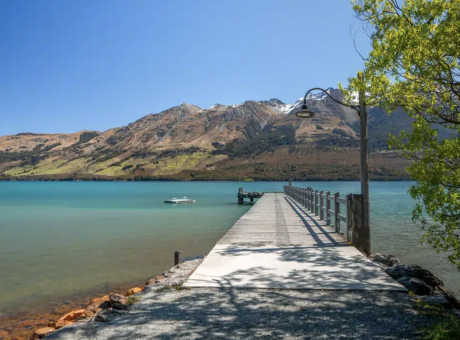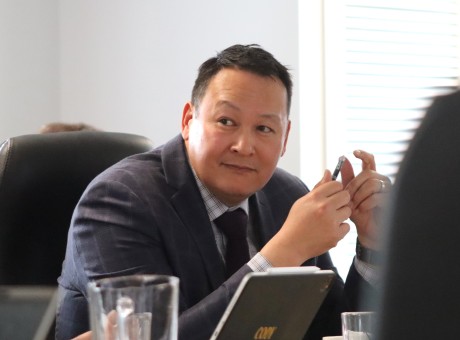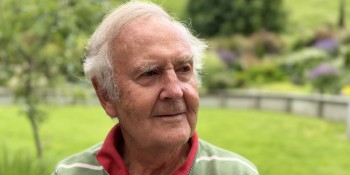'Pretty much impossible' to keep Queenstown bus fares low

An Otago Regional Councillor says Queenstown’s public transport system is being “set up to fail”, with the Government declining to fund an increase in ferry crossings and changing funding rules that have kept bus fares down to just two dollars.
The New Zealand Transport Agency has now written to local councils saying its expects them to increase their contributions to public transport, outside of what is already subsidised by rates or government funding.
However, Queenstown-based Dunstan Ward Councillor Alexa Forbes warns that risks a repeat of what happened only a couple of years ago with the town’s ferry fares.
“The Government is now saying that we need to have increase our farebox recovery, which is basically charging people higher (bus) fares.
“One of the things that we do know for sure is that you put up fares, you reduce your patronage. That is definitely a thing.
“We have seen that completely evidenced, as with the ferries in Queenstown, because the ferries got their concessions taken away or a couple of years ago now, and their patronage plummeted and it's never come back - and it won’t.”
Councillor Forbes says while there was the option to raise money by other means such as private funding or advertising, she points out that the council does not own its own buses. Those are owned by service operator Orbus.
“So, I don't know what that'll look like. We'll have to start thinking about that. I don't want to put fares up.
“There's people on the council that will think that people's personal contribution to the buses should be higher. I don't hold that view because I really think there's some really key drivers for getting people onto public transport and that's equity.
“People who can't afford to run cars and things shouldn't have to. They should be able to get around by bus.”
She also railed at the Government’s timeframe of June, next year, to implement the change, with the council expected to have agreed to respond to Government by December 20.
“I just don't see how that's possible at this point. I feel like we're being set up to fail.”
Following council discussions today, Councillor Forbes confirmed the council would need to increase its private share of the fare from 18 percent to 24 percent by the end of this financial year, then to 30 percent the following year and 42 percent the year after.
Even with an increase in patronage, which was already high because of the two dollar fare, she was sceptical on how that could be done without rising fares.
“I don't know how we are going to keep it. The public will have to speak very loudly,” she says.
The upcoming public consultation on the council’s Regional Transport plan would be all important, she said.
ORC Public and Active Transport Committee co-chair Andrew Noone says it seems that NZTA are revisiting a policy approach that existed prior to 2018-19 when the Government of the day rescinded the requirement to meet a target in relation to fare revenue from services.
“What this latest draft policy is wanting to achieve is basically a reintroduction of the earlier policy, however with a broader definition of private revenue. It will be pretty much impossible to hold fares at the current levels based on the Government’s proposal plus there’s been quite a few years of inflationary pressures via operational costs including higher driver wages and fuel prices”.
NZTA, last week also confirmed that the a number of proposed new bus routes would not be funded from the the new National Land Transport Programme, which is a $24.3 billion investment in land transport systems nationwide over the next three years.
“So, basically we're funded at the moment to deliver the bus service we've got, without improvements. So, that's a setback,” Forbes says.
Alongside that, a proposal for funding for new Queenstown ferries was also rejected.
“We're going to look at extra ferries and increasing the frequency of ferries to one an hour,” Councillor Forbes says.
“We're trying to really establish a strong, convenient, frequent and reliable public transport system but it's hard to grow it and build it in the funding environment that we've got.”
The changes could have an impact on Annual Plan discussions at next week’s regional council meeting, she says.
Earlier this year, Otago and Southland regional councils sought co-funding for a total of $1.78 billion from the Government for all transport projects across the regions but was allocated $1.4 billion – a shortfall of about $380 million.
The ORC shortfall for public transport is about $9 million over the next three years, meaning the following projects have been axed or changed.
- No increased service frequencies on Route 5/6 (Pine Hill - Calton Hill) and Route 10/11 (Opoho - Shiel Hill).
- No additional Queenstown ferry services.
- Trialling an Ōamaru - Dunedin bus service, but not an on-demand bus service in Ōamaru or other public transport within the town
- Investigating the best way to transport workers from Alexandra and Cromwell to Queenstown instead of trialling an Alexandra – Clyde - Cromwell - Queenstown bus service
- Investigating a public transport option to connect Balclutha to existing Dunedin bus services instead of trialling a Balclutha – Dunedin Airport – Dunedin bus service
- In Wānaka, ORC will not complete a Wānaka/Upper Clutha public transport business case but will continue to work to improve public transport services.
Main image: Bus fares are likely to rise in Queenstown.

























